Spaghetti and Meatballs: Tender and Temperature Perfect
When you think of Italian food, what do you think of? Maybe lasagna? Maybe chicken Parmigiana? Maybe. But more than likely, the first thing that pops into your mind when you hear the words “Italian food” is probably a heaping pile of spaghetti pasta, slicked red with tomato sauce, and topped with well-seasoned meatballs.
While spaghetti and meatballs may not actually be the most authentic Italian food, it is certainly the most iconic Italian-American food. Its prominence in cartoons and movies (as well as on menus!) has cemented it’s place in our culinary imaginations.
Here, we’ll tell you how to make this classic dish better than you have before by sharing a fantastic recipe based on one created by Bon Appétit and a little thermal know-how.
Spaghetti and meatball basics
While I will gladly eat almost any meatball that is served to me, a perfect plate of spaghetti and meatballs has a couple of important features:
- The noodles must be properly cooked, not mushy, but also not still hard and gummy inside.
- The sauce must be flavorful and should cling to the noodles. It should taste tomatoey but not try to compete with the meatballs.
- The meatballs must, above all, be properly cooked to a minimum internal temperature of 160°F (71°C). Beyond that they, should not be too dense, and they must be packed with delicious flavor.
Proper pasta
If you read this blog often, you may remember that we’ve covered cooking pasta in our How to Cook Pasta Better post. Take a look at that article for a deep dive into the physics of pasta cookery, but know that it boils down to this: for pasta with the right texture, use plenty of well-salted water and a timer to cook the pasta according to the time printed on the package. Then finish the pasta in the sauce with a little of the starchy pasta-cooking water until the sauce just starts to set and cling well to the noodles.
It is definitely worth spending a little extra to get a high-quality pasta, especially one that has a rough outer texture from being pressed through brass dies. Doing so will give you better noodle/sauce adhesion.
A good homemade sauce will usually beat a bottled one from the store, but use good quality ingredients to make it to really shine. The recipe in our pasta post is a surefire winner!
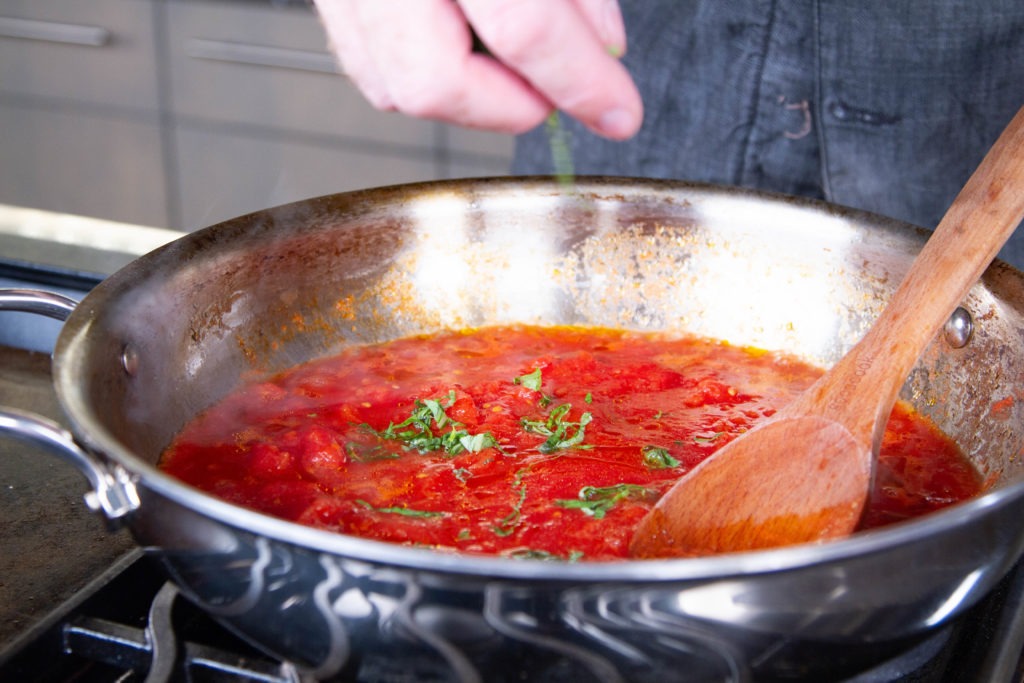
Quality meatballs
For an in-depth look at what makes a meatball work, read our post on Bacon-Wrapped BBQ Meatballs. And, because meatloaf is just one giant, long meatball, you might find useful guidance in our meatloaf post as well. But here we’ll take a quick glance at some of the basics you should know.
Binders
Meatballs need to be balls, not piles of loose ground meat and seasonings. And for that, they need binders. In this case, our binders are sandwich bread (or just about any bread, really) that has been soaked in water and then wrung out, ricotta cheese, and eggs. Together, these ingredients help hold the meatball together in its characteristic shape while it is cooked.
But being ball-shaped is not enough: meatballs should also be tender to the bite. To get the meat to form balls without being tough when cooked, mixing must be kept to a minimum. Mix by hand just until the ingredients smooth out and become homogeneous. It should definitely feel more firm than that a bowl of loose, eggy ground beef, but don’t overmix!
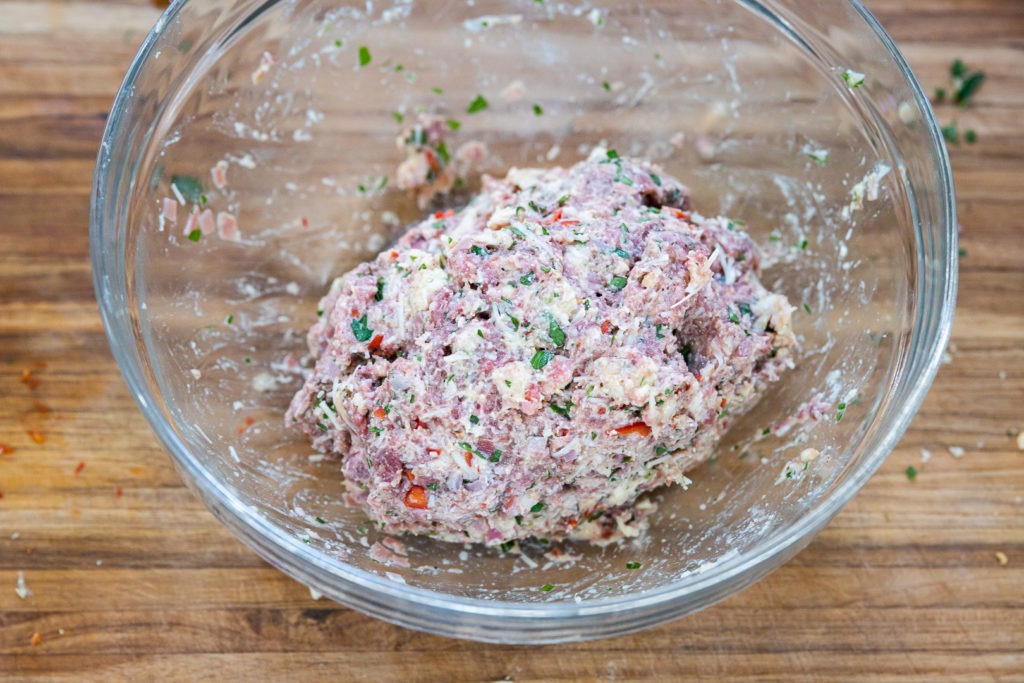
Seasoning
You can flavor meatballs however you want—that’s part of what makes them fun! But in this case, sticking to an Italian flavor palate is best. Finely sliced prosciutto ham and grated Parm lend complexity and a smooth saltiness to the mix and. Dried oregano and crushed fennel seeds lock in the Italian flavor and fresh parsley wakes things up nicely. This meatball maintains an exceptional balance while still cranking the flavor up to 10. The list of ingredients looks long, but the dashes of this and the small bits of that all work together to make something great.
That being said, you can make substitutions if necessary. Is prosciutto not available in your market deli? Use some ham! No whole-milk ricotta? use what you can get. What I mean to say is that you should make this recipe the best you can rather than not making it at all. It will still be great!
Searing
Searing the meatballs is super important for both flavor and texture. Browning the meatballs in a little hot oil will give the outside a dark, meaty crust that is appealing to the eye and deeply flavored with Maillard-reaction goodness. Use a large skillet to brown them or cook them in batches in a smaller skillet. They need a little breathing room while cooking so that they can brown well. Cook them for a couple minutes on one side, then roll them over and cook the other side before removing them from heat. They will not finish cooking at this stage, that will happen during their braise in the sauce.
Braise and final temps
The meatballs finish cooking in a hot bath of delicious tomato sauce, which adds to their flavor. You can make the sauce a few days in advance if you want, or you can make it fresh before getting going on the meatballs. If you pre-make it, reheat it before you add the meatballs in a larger, wide skillet. Either way, you need to cook the meatballs in simmering sauce to finish cooking them. Meatballs, being a ground-meat product, must reach a minimum internal temperature of 160°F (71°C) for food safety. Use an instant-read thermometer like the Thermapen® or Classic Thermapen to temp the meatballs in the sauce. If they sit in the sauce longer than necessary for food safety, the sauce will get meatier and the meatballs will get more tomatoey, but they will be great to eat as soon as they reach a safe temp.
One thing to be aware of in this dish is the dance of the doneness times for the pasta and the doneness temp for the meatballs. What you don’t want to have to do is keep your pasta waiting while your meatballs come up to temp. It’s best to let the sauce and meatballs simmer for about 10 minutes before you start to boil the water for the pasta. Your meatballs will be fine if they go over temperature by a few degrees, but your pasta will not be fine if it gets soggy in the water.
Print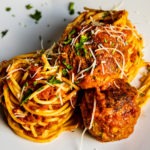
Spaghetti and Meatballs Recipe
Description
Adapted from BA’s Best Spaghetti and Meatballs
Ingredients
For the meatballs:
- 3 thick slices white sandwich bread without crusts
- 2 large eggs, beaten
- 2 garlic cloves, finely chopped
- ⅓ C fresh whole-milk ricotta
- ¼ C finely chopped parsley
- ¼ C finely chopped prosciutto
- 1 red chili, finely diced (optional)
- ⅓ C grated Parmesan, plus more
- ¾ tsp fennel seeds
- ¾ tsp dried oregano
- ½ tsp ground nutmeg
- ½ tsp ground black pepper
- ¼ tsp crushed red pepper flakes
- 1¼ tsp kosher salt
- 1 lb ground beef chuck (20% fat is best)
- 2 Tbsp olive oil, plus more for forming
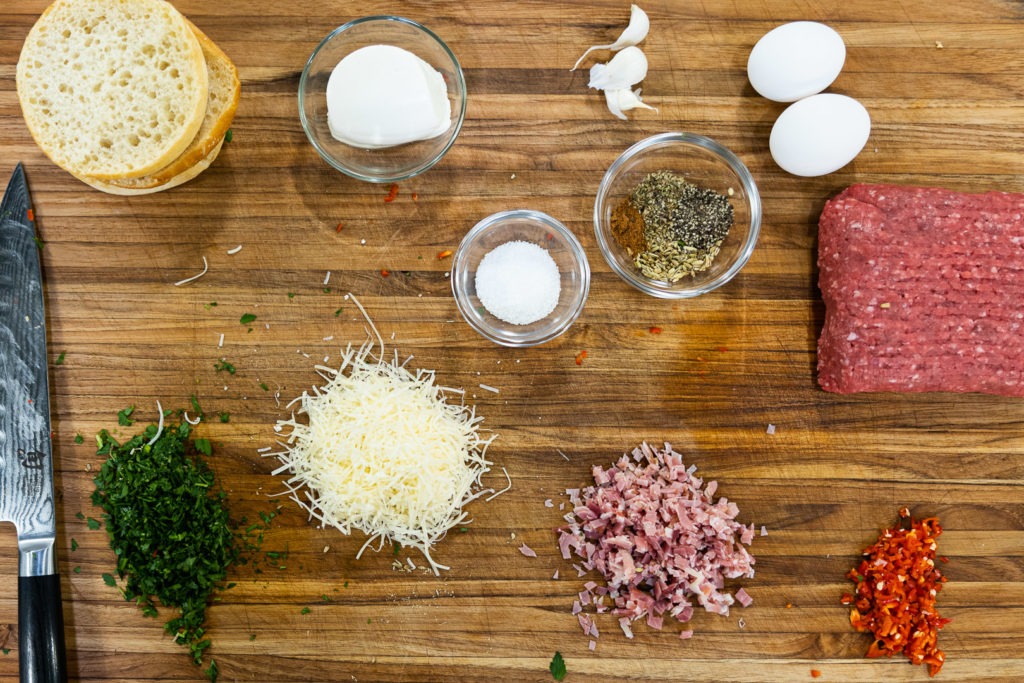
For the pasta and sauce:
Make up the sauce for the Pasta al Pomodoro form our post on How to Cook Pasta Better, and have the dried spaghetti from the same recipe ready to cook. The sauce can be made up to 3 days in advance and kept cold in the refrigerator.
Instructions
Make the meatballs and start them braising
- Run the bread slices under running water to soak it. Wring as much water out if it as you can. Chop the wet bread as finely as you can and place it in a large bowl for mixing.
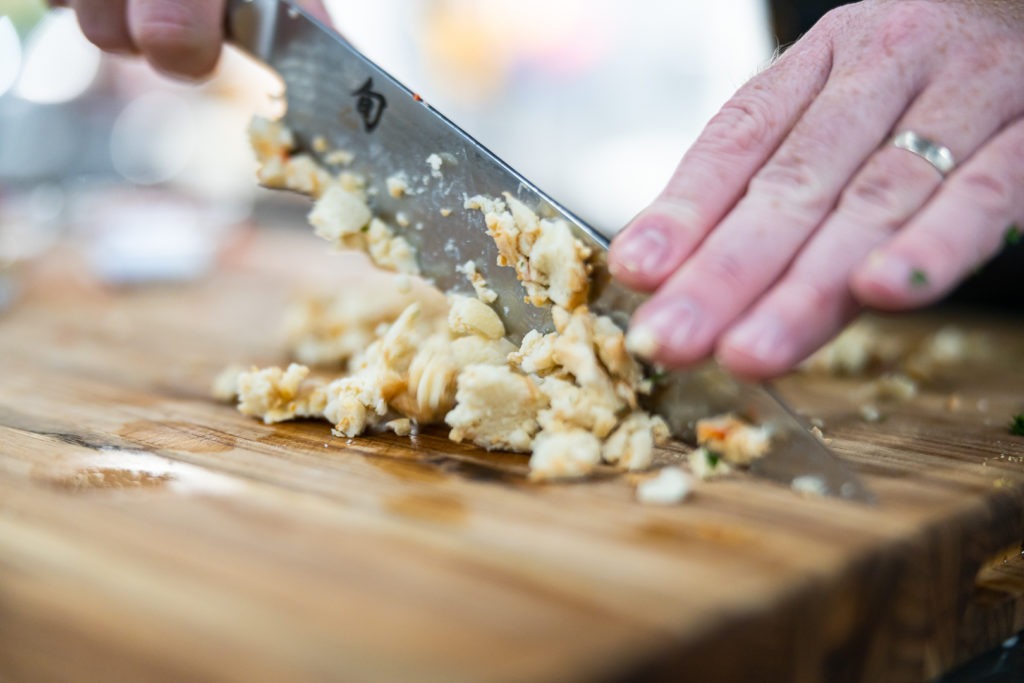
- Add the 1/3 C Parmesan as well as the garlic, ricotta, prosciutto, parsley, and eggs.
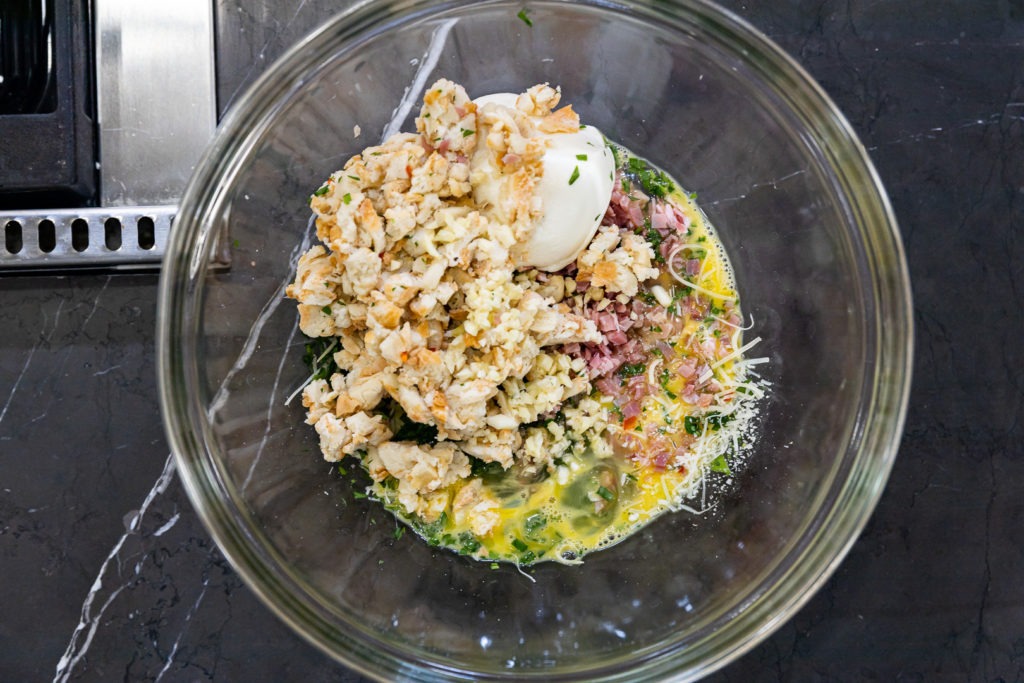
- Grind the fennel seeds in a spice grinder or crush them finely in a mortar and pestle. (Adding the 1-1/4 tsp salt to the fennel seeds can help it to grind better.)
- Add the fennel, salt, pepper, oregano, nutmeg, red chili (if using), and pepper flakes to the chopped bread and seasonings.
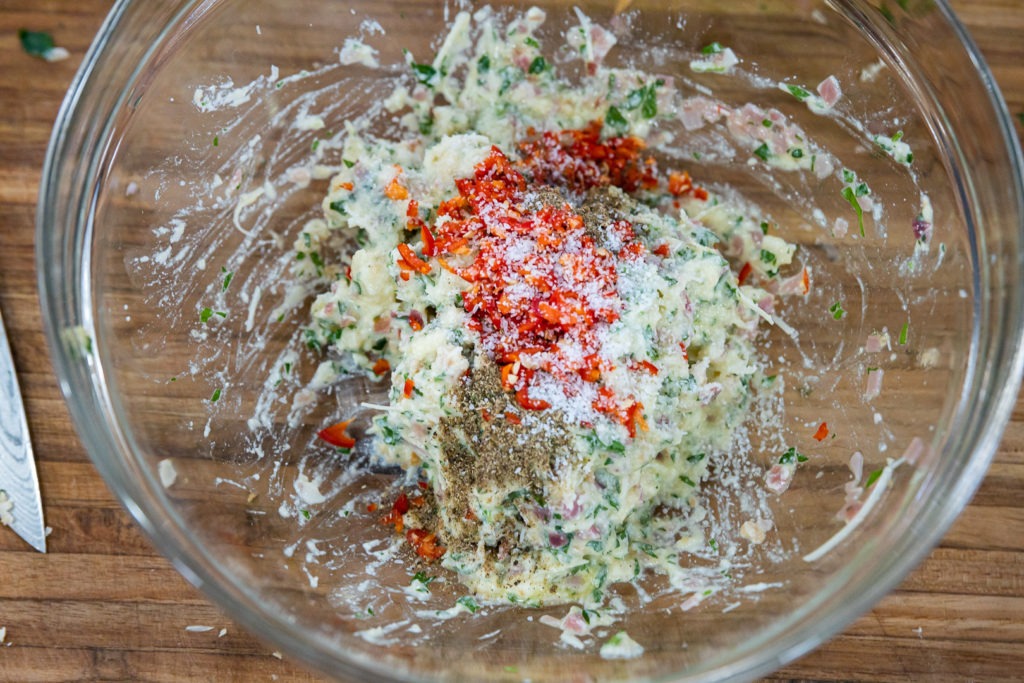
- Add the ground beef. Break the beef into small slumps and then mix the entire mixture thoroughly by hand. Mix it until it just becomes homogeneous and smooth. Don’t overmix beyond that point.
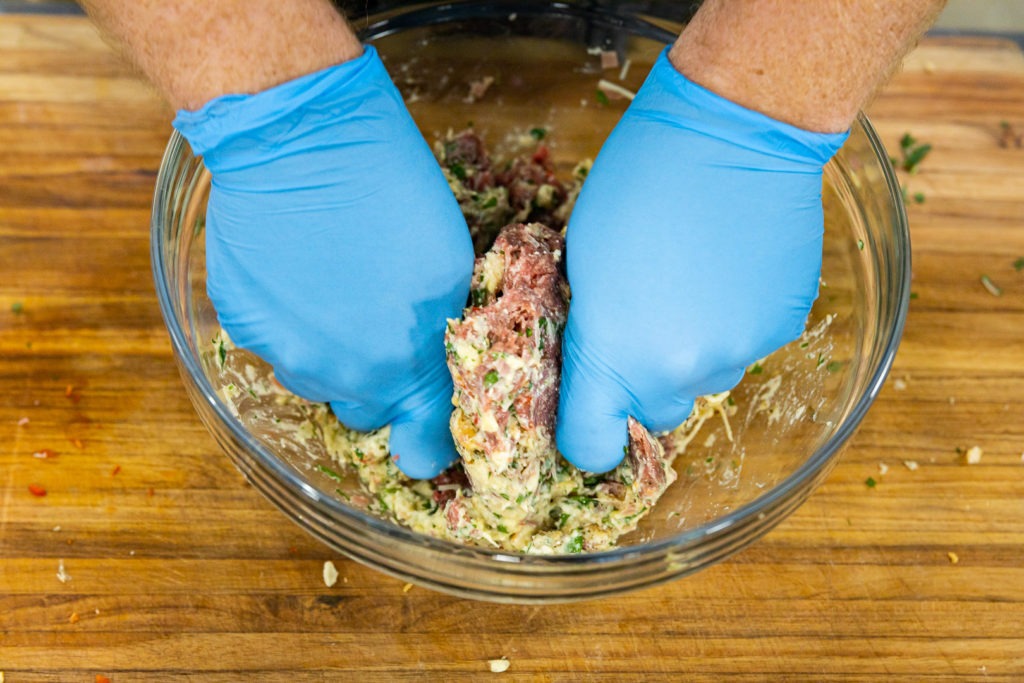
- Oil your hands with some olive oil and roll 1/4-cup portions of the meat into balls. Set them aside on a plate or a baking sheet.
- Start reheating the pasta sauce in a deep skillet. If you made if fresh just now, then keep it hot.
- Once all the meat has been rolled into balls, heat 1 Tbsp oil in a skillet over medium-high heat and brown the meatballs well on at least two sides. They will not be cooked through, and that is just fine.
- Once all the meatballs are all browned, place them gently in the pan with the sauce and simmer them together. Simmer for about 10 minutes, then start preparing the pasta.
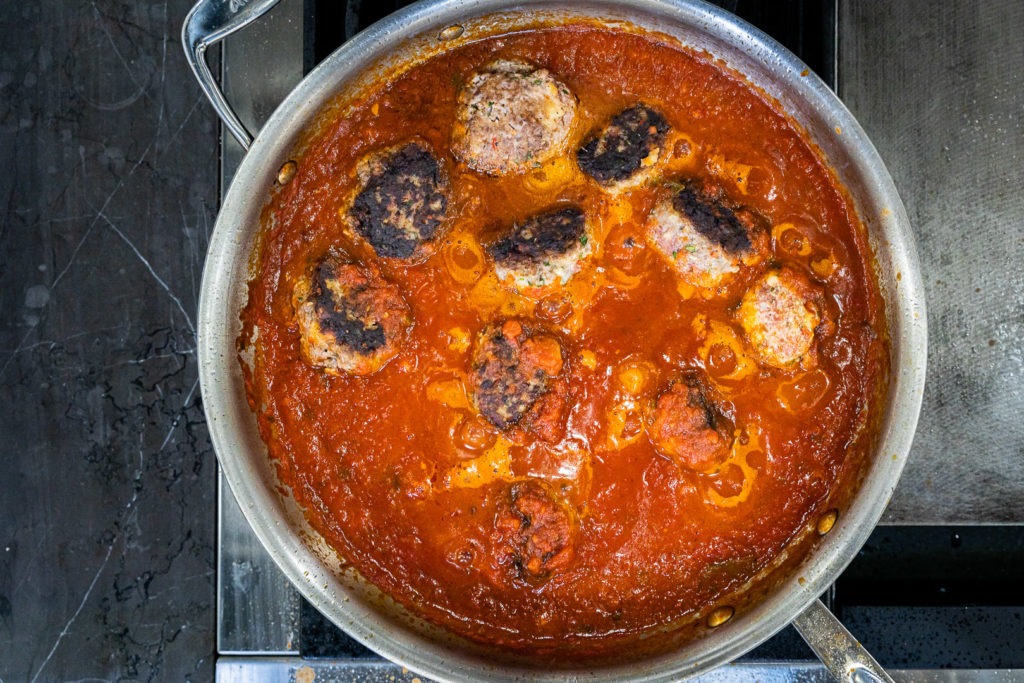
Prepare the pasta and finish the dish
- While the meatballs simmer, Bring a large pot of well-salted water to a boil.
- Add the spaghetti do the water and use a timer, like the Extra Big & Loud Timer, to time it according to the package’s instructions. Good-quality pasta will take about 10 minutes.
- Using an instant-read thermometer like the Thermapen Mk4, check the temperature of the meatballs. They need to have a minimum temperature of 160°F (71°C).

- Once the meatballs reach the minimum temperature and the pasta timer is almost up, remove the meatballs to a separate platter and drain the pasta, reserving about a cup of the starchy pasta water. Do not rinse the noodles.
- Add the cooked pasta to the sauce along with enough pasta water to loosen the sauce slightly. Cook the pasta together with the sauce over medium-high heat for about one minute, until the sauce starts to thicken again and clings nicely to the noodles.
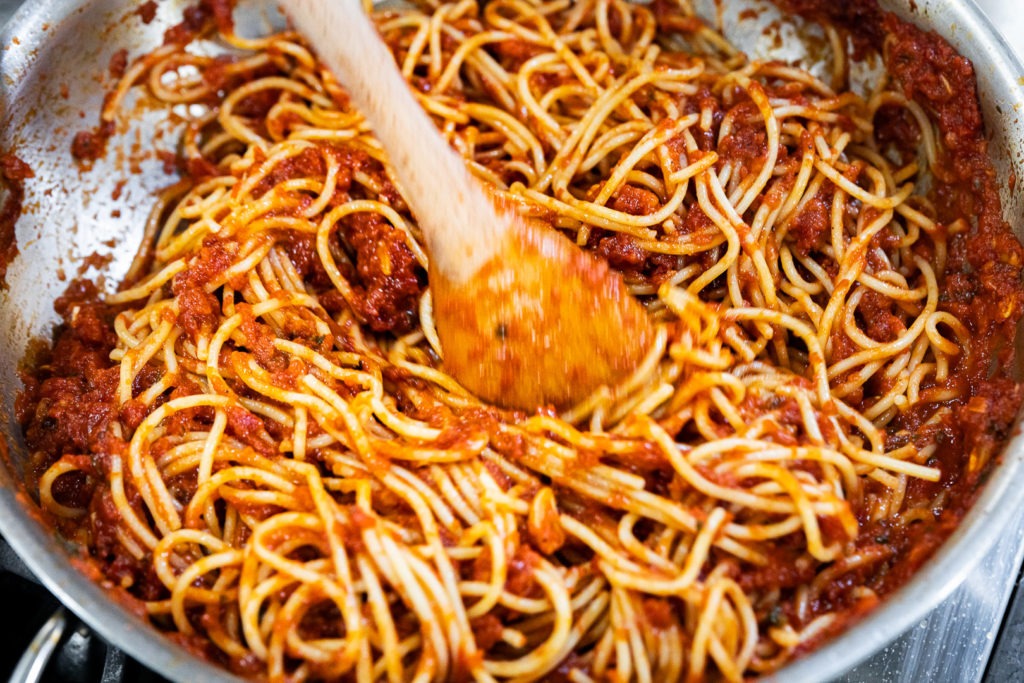
- Plate the pasta for serving and either top with the meatballs or serve them on a plate alongside. Garnish with shredded parm and freshly torn basil leaves.
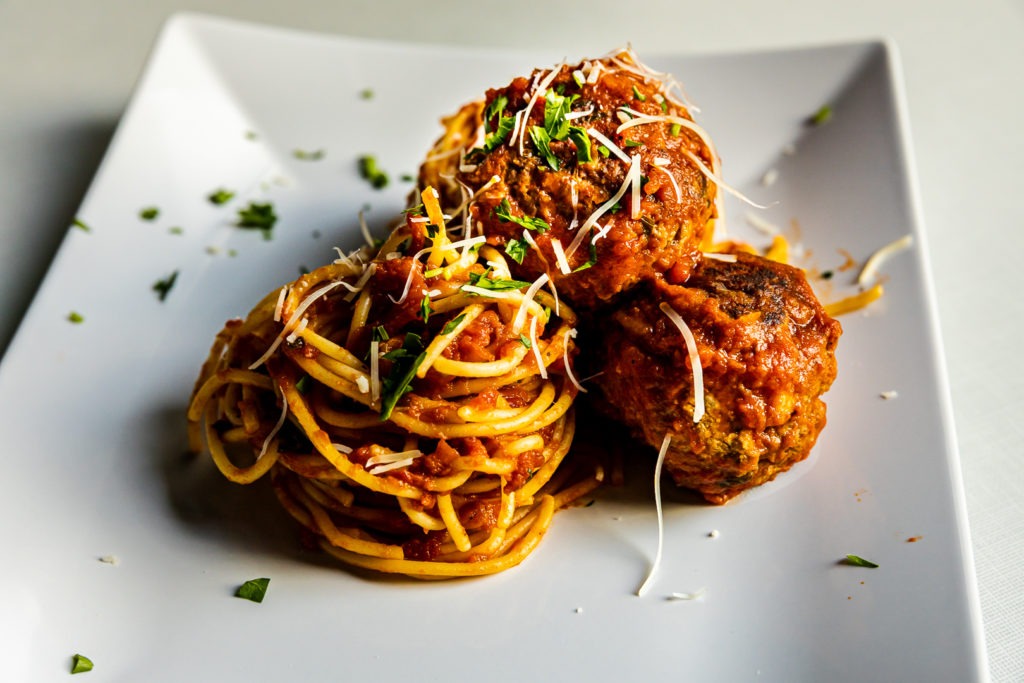
Master this recipe (it’s not hard!) and in no time your own dining room will be the cozy little neighborhood place with the best spaghetti and meatballs in town. Time your pasta and make sure your meatballs are well browned and safely temped and make meatball dinners a regular feature for your family. Mangia!
Shop now for products used in this post:


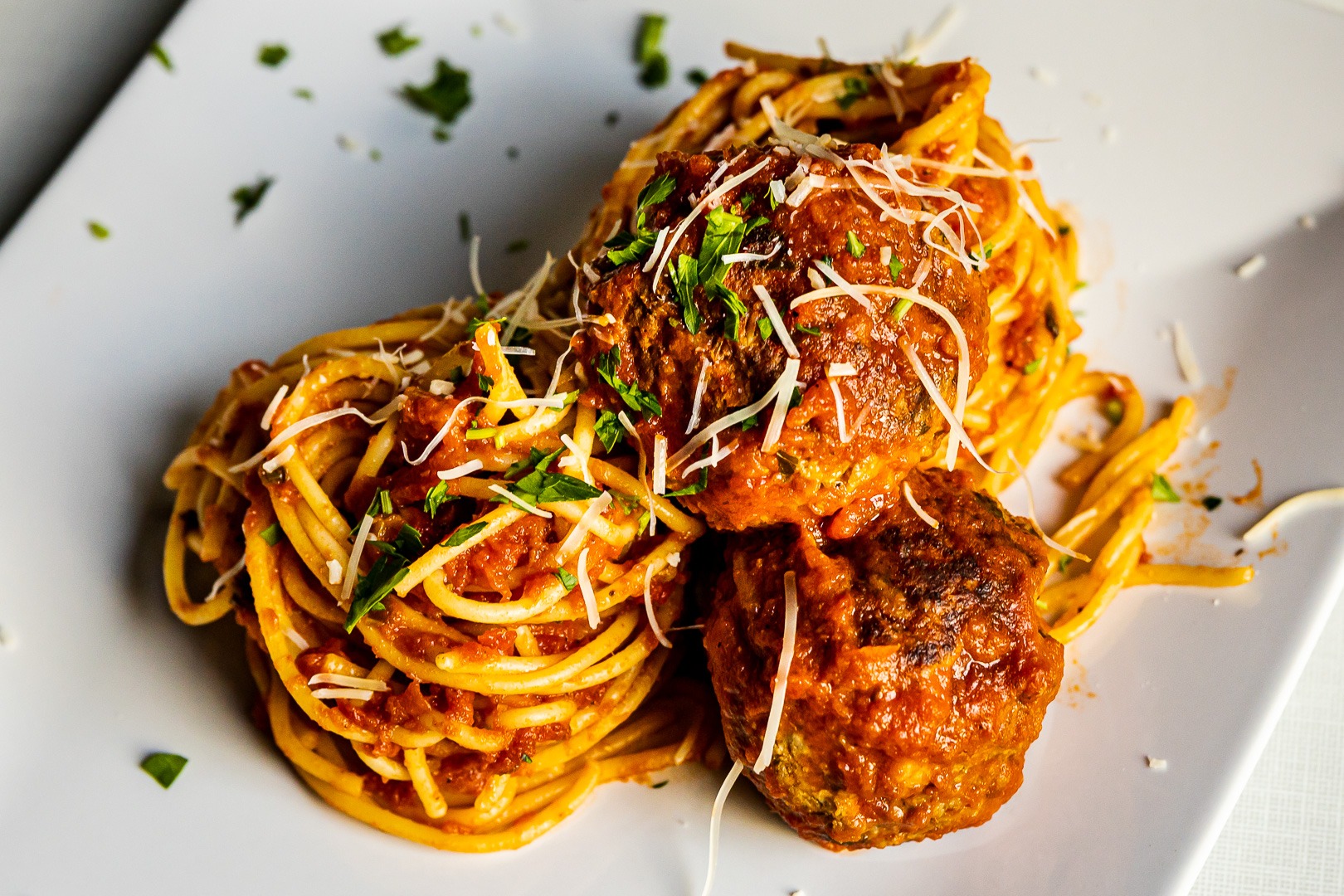
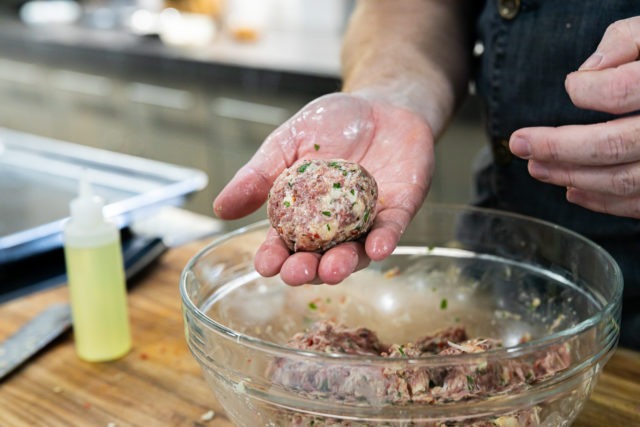
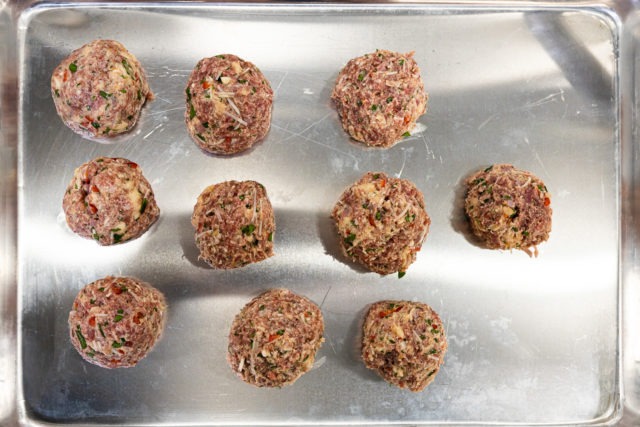
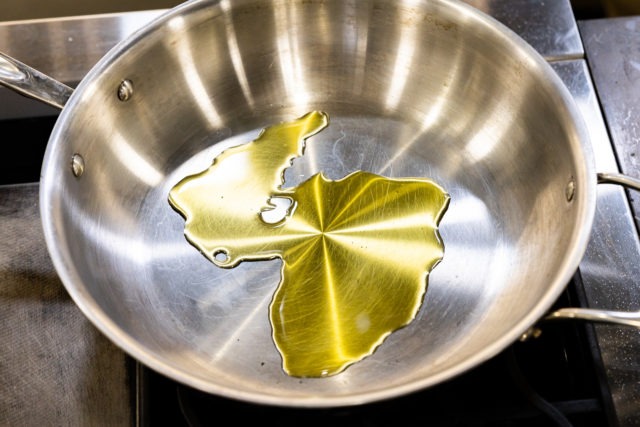
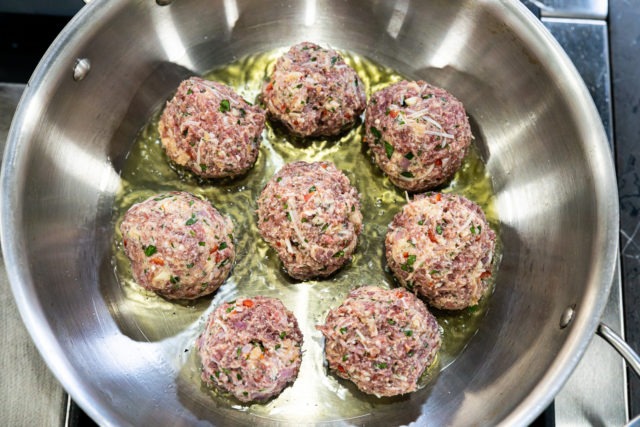
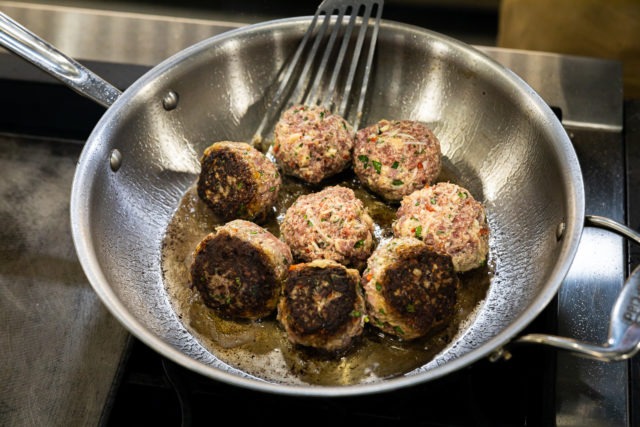
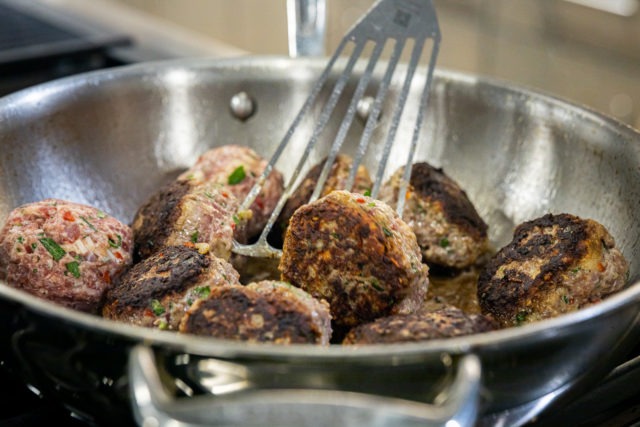
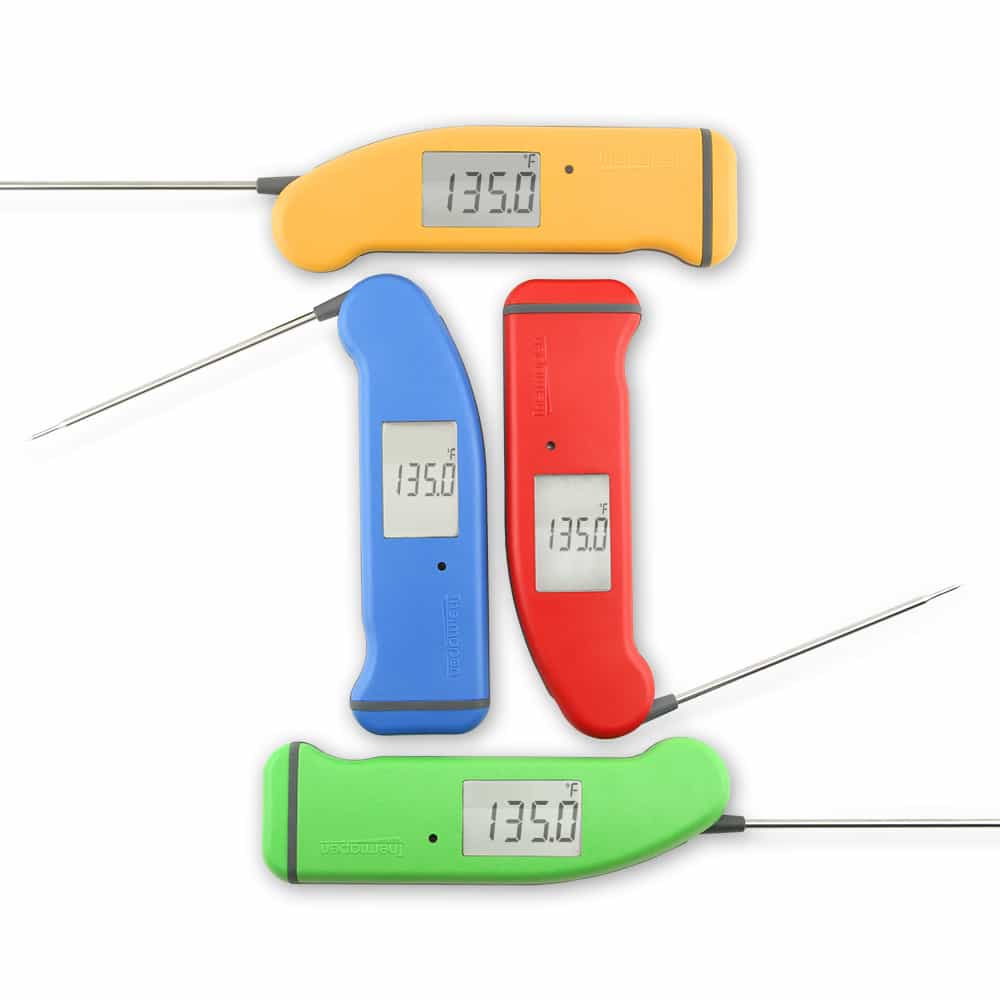
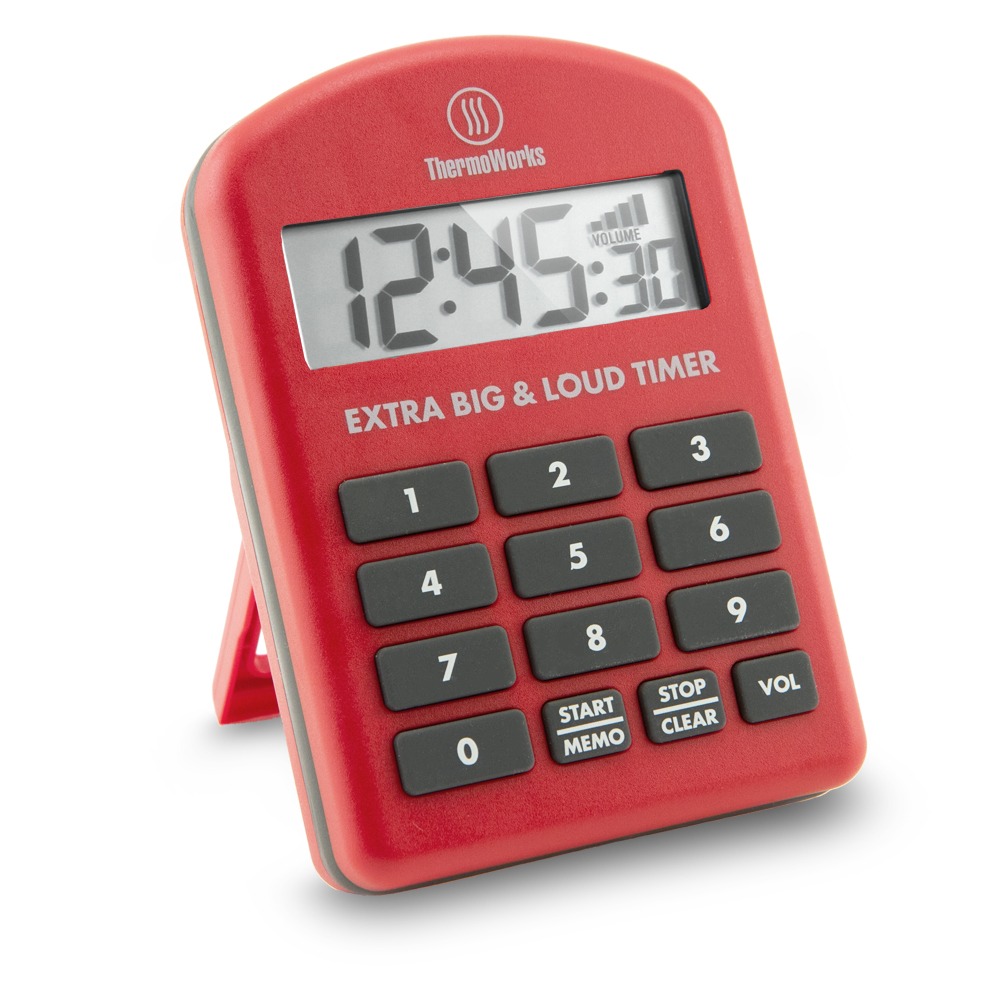
Love you folks!
I’d suggest that we don’t place bread or breadcrumbs in the category of binders. I think Mr. López-Alt would support me in this.
Keep up the good work!
What is utterly amazing is how the individual flavors keep their integrity for a full burst of pleasing tastes all at once in every single bite. I feel like an artist who has just completed his masterpiece. Thank you.
Thank YOU!